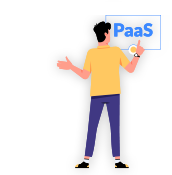Jamio's Plus
Model document workflows with Jamio
Any process that involves creating, editing,storing, sharing and distributing documents can benefit from effective, automated document management to reduce errors, time and costs associated with manual document management. Here are some examples of document processes that can be modeled using Jamio's no-code approach:
Purchasing or supply processes-Providefor the management of the lifecycle of an order: templates, subscriptions, requests for quotations, contracts, supplier evaluation etc;
Personnel management processes-Relate to the management of an employment contract: bargaining, signing, distribution of payroll, vacation and leave requests, creation and distribution of work safety and training documents, etc;
Quality management processes-Provide for the lifecycle management of the company's quality-related documents, such as quality manuals, standard operating procedures, audit reports, nonconformity reports, corrective and preventive actions etc;
Project management processes-They deal with the lifecycle management of documents related to the planning,execution, and monitoring of the company's projects, with delivery documentation, risk reports, and control of deadlines and statuses;
Technical support processes-Thedocuments related to the technical assistance provided to the company’s customers are managed, such as the intervention reports, the intervention sheets, the customer evaluation and the documents related to the guarantees and maintenance contracts;
and many others.....









